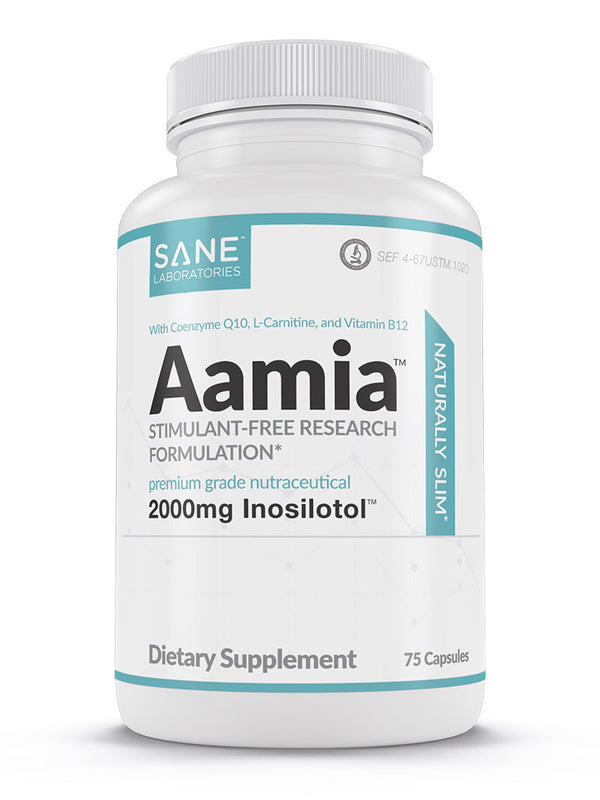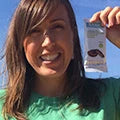Starting a ketogenic diet is a big lifestyle shift. It’s exciting to think about the potential benefits—like shedding pounds quickly or balancing blood sugar levels—but sometimes, there’s an unexpected downside: keto bloat and even stomach discomfort. You might wonder, “How can this be happening on a low-carb diet? Aren’t carbs the usual suspect behind digestive troubles?”
Click here to learn more about Viscera-3® and to place your order now while supplies last!
Well, switching to a high-fat, low-carb way of eating can throw your body off a bit at first. The reasons for bloatingon keto can vary, but it’s important to know that this is often a normal part of the adjustment phase. Our bodies don’t always react the same way to new routines, and even healthy changes can come with a few bumps along the way.
If you’ve been feeling a bit bloated or uncomfortable as you dive into keto, you’re definitely not alone. The good news is this typically doesn’t last long. Most people find that their body gets used to its new energy source, and those symptoms disappear. Curious about why this happens and what you can do to make things easier? Keep reading for some helpful insights that might just make your keto transition a whole lot smoother.
Know someone who’s dealing with the same issue? Share this with them! It might help ease their experience and get them back on track. After all, we’re all on this health journey together—why not make it a little easier for everyone?
5 Reasons Why Keto Might Be Causing Bloating
Transitioning to a keto diet can be quite a shift for your body. Along with common “keto flu” symptoms like headaches or irritability, you might also notice some bloating sneaking in. And while keto is known for its weight loss and health benefits, the initial adjustment can be a little tough on your digestive system. Individuals with irritable bowel syndrome (IBS) may experience more pronounced symptoms during the transition to a keto diet.
Let’s explore why bloating might happen on a keto diet and how you can tackle it to make your journey a little easier.
1. Lower Fiber Intake
Cutting out many high-carb foods, including fruits and starchy vegetables, is a key part of keto, but it also means you’re losing out on some dietary fiber. Fiber is essential for keeping things moving smoothly in your digestive tract, and when your intake drops suddenly, bloating and constipation can follow.
The fix? Add more fiber-rich, keto-friendly foods like leafy greens, avocados, and nuts to your meals to help prevent that uncomfortable bloated feeling.
2. More Dairy and Fat
On keto, a lot of people ramp up their intake of fats, including dairy products like cheese and cream. While these are great for staying in ketosis, consuming too much healthy fat can be harder for some to digest. If you’re lactose intolerant or just sensitive to high amounts of fat, bloating can be the result.
Try using lactose-free dairy options or moderating your fat intake to see if it helps ease the discomfort.
3. Adjusting to Fat Digestion
Keto relies heavily on fat for energy, which is a big shift if your diet was previously carb-focused. In the beginning, your body might not produce enough lipase—the enzyme responsible for breaking down fats. Without enough of this enzyme, you could struggle with digestion, leading to bloating and stomach pain.
The good news? Over time, your body typically ramps up enzyme production, and fat digestion gets easier.
4. Artificial Sweeteners
When cutting carbs, many people turn to artificial sweeteners, but some of these—especially sugar alcohols—can ferment in your gut. The result? Gas and bloating. Sugar alcohols are notorious for causing digestive issues if you consume too much.
Be mindful of the type and amount of artificial sweeteners you’re using to avoid unnecessary discomfort.
5. Dehydration and Electrolyte Imbalance
In the early days of keto, it’s common to lose a lot of water weight, along with important electrolytes like sodium, potassium, and magnesium. Dehydration can slow down your digestion, and an electrolyte imbalance can mess with how muscles in your digestive tract function—leading to bloating and abdominal pain.
Staying hydrated and replenishing electrolytes can help keep digestion on track and minimize bloating.
Understanding why keto bloating happens can help you make a few tweaks to your routine, giving your body the support it needs to adjust. Remember, everyone’s body is different, and sometimes, finding what works best for you takes a little time.
4 Common Reasons You Might Be Gaining Weight on Keto
The ketogenic diet is well-known for its weight loss benefits, but what if the scale starts creeping up instead? If you're gaining weight on keto, it can be confusing and frustrating, especially when you're sticking to the low-carb, high-fat plan.
But don't worry—there are a few common reasons why this might be happening, and understanding them could help you get back on track.
1. Too Many Calories
Even though keto focuses on high-fat foods, it’s still possible to overeat. Fats are calorie-dense, and it’s easy to lose track of how much you’re consuming, especially with snacks like nuts, cheese, and oils. If you’re taking in more calories than your body burns, you’ll gain weight—even on keto.
Try observing portion sizes and tracking your intake to ensure you’re not eating more than your body needs.
2. Not Enough Protein
Protein plays a key role in weight management. It helps you feel fuller and supports your metabolism. On keto, there’s a fine line—too little protein can leave you feeling hungry and lead to overeating, while too much can kick you out of ketosis.
Finding the right balance of protein helps preserve muscle and keeps you satisfied, making it easier to manage your weight.
3. Hidden Carbs
Some foods that are marketed as "low-carb" might still hide more carbohydrates than you expect, especially in processed products like sauces, dressings, and packaged snacks. Too many hidden carbs can push you out of ketosis, meaning your body isn’t burning fat as effectively.
To avoid this, check labels carefully and stick to whole, unprocessed foods whenever possible.
4. Keto Adaptation Period
When you first start keto, your body has to adjust from burning carbs for fuel to burning fats. During this adaptation phase, you might notice some temporary weight gain due to hormonal changes and water retention.
The good news is that this phase usually doesn’t last long. Stay consistent, and your body will eventually adjust, allowing you to start seeing the weight loss results you’re after.
Understanding these common pitfalls can make a world of difference in your keto journey. By adjusting your approach, you can work through any temporary weight gain and get back to reaching your goals.
6 Ways to Reduce Bloating on Keto
Bloating can take away from some of the great benefits of the keto diet, like weight loss and better health. Luckily, there are simple ways to reduce or even prevent bloating, making your keto experience more comfortable and enjoyable.
Here are six strategies to help you stay on track while keeping the bloating at bay:
1. Boost Your Fiber Intake
Low-carb, high-fiber veggies like leafy greens, broccoli, and cauliflower can work wonders for your digestion. Slowly increasing your fiber intake helps regulate your system and prevents constipation, which is often the culprit behind keto bloating.
The key is to introduce fiber gradually, so your digestive system can adjust without feeling overwhelmed. This can make a big difference in reducing bloating.
2. Stay Hydrated
Water is your best friend on keto. It helps you manage that initial water weight loss and supports digestion. Staying hydrated keeps things moving and can prevent constipation, a major cause of bloating.
Aim for several glasses of water a day, and if you’re active or live in a hot climate, consider increasing your intake even more.
3. Watch Your Portions with Fatty Foods
Fats are a major part of keto, but too much can slow down digestion and cause bloating. If you notice discomfort, try moderating your intake of very high-fat foods and see how your body responds.
Smaller, more frequent meals can also help your body digest more efficiently and reduce bloating.
4. Add Probiotics
Probiotics can help balance the gut bacteria, which play a big role in digestion. Fermented foods like sauerkraut, kimchi, and unsweetened yogurt are great sources of probiotics that can help ease digestion and reduce gas.
If you’re not getting enough from food, probiotic supplements are another good option.
5. Be Careful with Sweeteners
Artificial sweeteners, often found in keto products, can ferment in the gut and lead to gas and bloating.
Sugar alcohols like sorbitol, mannitol, and xylitol are common offenders. Opt for natural sweeteners like stevia or erythritol, which are easier on your digestive system.
6. Get Moving
A little light exercise, like a walk after meals, can help your digestive system along by stimulating bowel movements and reducing gas. Regular activity keeps everything moving smoothly and helps ease bloating.
By following these tips, you can reduce bloating and make your keto journey a lot more comfortable. These small changes not only support digestion but also contribute to your overall success on keto.
5 Ways to Combat Water Retention on Keto
Switching to a keto diet can sometimes lead to an unexpected side effect: water retention. While keto is known for its diuretic effects early on, this temporary fluid buildup can still happen, leaving you feeling bloated and uncomfortable.
Don’t worry, though—there are some simple ways to tackle water retention and keep your keto progress on track. Here’s how:
1. Balance Your Electrolytes
A common cause of water retention on keto is an imbalance in electrolytes, especially sodium, potassium, and magnesium. When you cut carbs, your body flushes out more sodium and water, which can throw things off balance.
To fix this, make sure you’re getting enough electrolytes. Include potassium-rich foods like avocados, snack on nuts for magnesium, and don’t shy away from adding a little extra salt to your meals.
2. Drink More Water
It may seem counterintuitive, but drinking more water can actually help reduce water retention. When your body feels dehydrated, it tends to hold onto fluids. Drinking plenty of water tells your body it’s okay to let go of that extra water weight.
Aim for at least eight glasses of water a day and adjust based on how active you are or the weather in your area.
3. Watch Your Protein Intake
Eating too much protein on keto can trigger gluconeogenesis, where amino acids get converted into glucose. This can lead to water retention. The trick is to keep your protein intake balanced—not too high or too low.
Most keto followers aim for about 20-25% of their calories from protein, but you can adjust based on your activity level and goals.
4. Add Natural Diuretics
Natural diuretics, like cucumber, celery, and asparagus, can help your body shed excess water without the need for medication. These foods support healthy fluid balance while adding some variety to your keto meals.
Herbal teas like dandelion or green tea are also great options, and they come with added antioxidant benefits.
5. Get Moving
Regular exercise is key to reducing water retention. Physical activity helps improve circulation and stimulates the body to release extra fluids. Activities like walking, cycling, or even a good cardio session can work wonders.
Try to fit in at least 30 minutes of moderate exercise most days to help keep water retention in check.
By incorporating these strategies into your routine, you can effectively manage water retention on keto and make your journey more comfortable. Each step not only helps with fluid balance but also supports your overall health and well-being.
FAQ: Common Questions About the Keto Diet
The ketogenic (keto) diet has gained popularity for its potential health benefits, particularly in weight loss and improving blood sugar control. However, like any major dietary change, it can come with questions—especially when you’re starting out. Below, you’ll find answers to some of the most common questions about keto to help you feel more confident as you navigate this low-carb, high-fat lifestyle.
1. What exactly is the ketogenic diet?
The ketogenic diet is a low-carbohydrate, high-fat diet designed to shift your body into a state of ketosis. In ketosis, your body burns fat for energy instead of carbohydrates, which can lead to weight loss and improved energy levels. By reducing carbs significantly and increasing fats, you encourage your body to use fat as its main fuel source, rather than glucose from carbs. Adopting a keto lifestyle can also help manage symptoms of IBS, inflammation, and bloating, offering a holistic approach to improving overall health.
2. How long does it take to enter ketosis?
Most people enter ketosis within 2 to 7 days after drastically reducing their carb intake. However, this can vary depending on factors like your metabolism, activity level, and how strictly you follow the diet. If you're not seeing signs of ketosis right away (like increased ketone levels or reduced appetite), don't worry. Stay consistent with your carb intake and give your body time to adapt.
3. Can I eat carbs on keto?
Yes, but in very small amounts. The typical ketogenic diet allows for about 20-50 grams of net carbs per day. This usually means avoiding starchy foods like bread, pasta, and potatoes, and focusing on low-carb veggies, meats, and healthy fats. The goal is to keep your carb intake low enough to stay in ketosis, so you'll need to be mindful of your daily carb limit.
4. Will I experience side effects when starting keto?
It’s common to experience some temporary side effects when you first start keto, often called the "keto flu." These symptoms can include headaches, fatigue, irritability, and muscle cramps as your body adjusts to burning fat instead of carbs. These symptoms usually last a few days to a week and can be eased by staying hydrated, replenishing electrolytes, and eating enough healthy fats.
5. Is the keto diet safe for everyone?
The keto diet can be safe for most people, but it’s not for everyone. People with certain medical conditions, like diabetes, heart disease, or kidney issues, should consult a doctor before starting keto. Also, pregnant or breastfeeding women should check with their healthcare provider. It’s always a good idea to seek professional advice to ensure keto is the right choice for your individual health needs.
Conclusion: Spread the Word!
Navigating the ups and downs of a keto diet—whether it’s bloating, unexpected weight gain, or water retention—can be tricky, but it’s all part of the journey to better health. These tips are here to make that transition smoother and more comfortable, helping you get the most out of your keto experience.
Did you find these insights helpful? If so, why not share them with friends and family? A quick post on social media or a thoughtful email could make a big difference for someone facing the same keto challenges.
Let’s support each other in our pursuit of health and wellness by sharing useful tips and practical advice. After all, we’re all in this together!
Try Viscera-3 for Bloating
Adding a postbiotic like Viscera-3 to your routine can really help ease bloating during your keto journey. Viscera-3 supports better protein digestion, promotes gut health, and helps replenish the good bacteria your body needs. By improving digestion, it can make a noticeable difference in how you feel.
Click here to learn more about Viscera-3® and to place your order now while supplies last!
































